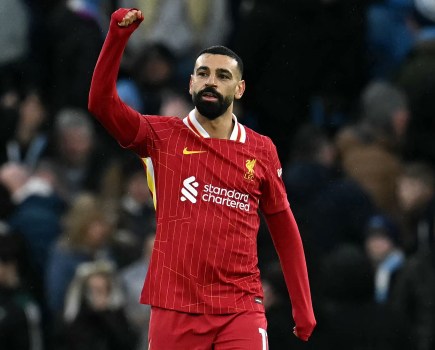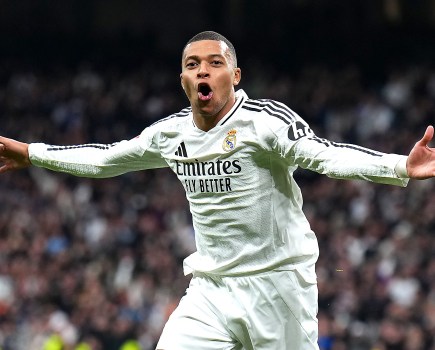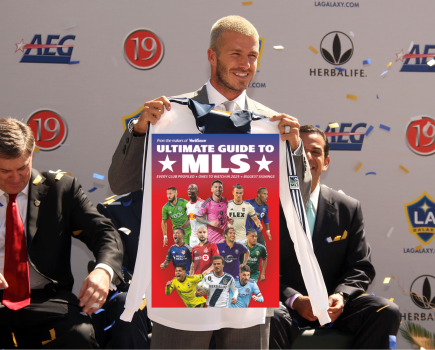 The Club World Cup hardly needs any extra spice in South America, where it is already considered the highlight of the club calendar, with all the continent’s teams desperate to have a crack at the winners of Europe’s Champions League. But the inclusion of Neymar in the list of candidates for the FIFA World Player of the Year award has undoubtedly raised the stakes for December’s competition in Japan.
The Club World Cup hardly needs any extra spice in South America, where it is already considered the highlight of the club calendar, with all the continent’s teams desperate to have a crack at the winners of Europe’s Champions League. But the inclusion of Neymar in the list of candidates for the FIFA World Player of the Year award has undoubtedly raised the stakes for December’s competition in Japan.
And for the first time since the current version of the tournament was inaugurated in 2005, the club representing Europe does not have a monopoly on attacking superstars.
In Brazil, the 2011 tournament is being built up as an individual duel between Neymar and Lionel Messi, with a debate raging (surely prematurely) over whether the Santos wonderkid can already be considered to be on the same level as Barcelona’s little Argentinian.
At club level a Club World Cup Final clash this year could be the only time for some while that the pair are on the same pitch as Neymar has just signed a new contract, putting him among the top-10 best-paid players in the world and designed to keep him
in Brazil until 2014. Whether he stays that long is another matter, but in the short term there is no doubt this is a triumph for club president Luis Alvaro Ribeiro, who is up for re-election.
 Of course, there is no guarantee that Messi and Neymar will meet in the Final. Last year’s tournament stands out as a warning, especially to Santos, whose compatriots, Internacional, were beaten in the semi-finals by African champions TP Mazembe and therefore missed out on their chance of measuring themselves against Internazionale.
Of course, there is no guarantee that Messi and Neymar will meet in the Final. Last year’s tournament stands out as a warning, especially to Santos, whose compatriots, Internacional, were beaten in the semi-finals by African champions TP Mazembe and therefore missed out on their chance of measuring themselves against Internazionale.
But assuming things go to form, and this year throws up a Europe versus South America Final, then as well as an intriguing match-up there will also be a huge contrast in attitudes towards the competition – caused not only by relative European indifference as opposed to a South American chip on the shoulder, but also by realities imposed by the clubs’ respective fixture lists.
With Barcelona sweating on every dropped point in La Liga and also negotiating their way through the group stage of the Champions League, travelling to Japan is an afterthought. Santos, meanwhile, have effectively been on holiday.
As holders, their place in the 2012 Libertadores Cup is guaranteed, which left them
with little incentive to perform consistently in the Brazilian championship. True, they have suffered with international call-ups to the Copa America and the World Youth Cup, not to mention various problems with injuries, but, unusually for a team coached by Muricy Ramalho, their defensive record has been poor, and occasionally they have needed a spurt of victories to keep them a safe distance above the relegation zone.
As it has turned out, the teams towards the top of the Brazilian table have slipped up so often that with just a few more wins Santos could have been fighting for the title. But this is little more than a minor frustration; the focus has always been on the Club World Cup.
Special Players
Although Pele declined the offer of a cameo comeback as part of the playing staff, other audacious ideas did make it beyond the planning stage. Some of the players have been taught to speak enough Japanese in order to record messages in the language on the club website in an attempt to win the hearts of the local public. And Ramalho has spent hours studying Barcelona, coming up with conclusions which, if implemented, hold out the promise of a contest which could finally spark global interest in what is
still a fledgling competition.
“They play well against all types of football,” says Ramalho. “No one has been able to cancel out what they do best.
“I concluded that since I also have special players at my disposition I’m going to get them to play. Let’s see if they can enjoy themselves a little!”
These are brave words which, if sincere, run the risk of exposing a lack of pace at the heart of Ramalho’s defence. But Santos do have the most talented squad any South American club has taken to the tournament in the seven years of the current format.
In previous years, Libertadores Cup winners tended to lose some of their stars between lifting the continental trophy and travelling to the Club World Cup, but this year, on paper at least, Santos are stronger now than when they claimed their third Libertadores title at the end of June.
The only first-choice player to have left is centre-forward Ze Eduardo, who contributed just one goal to the campaign, and he has been more than successfully replaced by Borges, a striker whose career has been uneven but whose talent is beyond question. By some distance the leading goalscorer in the Brazilian championship, Borges was handed his international debut just a few days short of his 31st birthday.
Another interesting newcomer is former under-20 international striker Alan Kardec, a more versatile player since his spell with Benfica. And the midfield has been strengthened with the acquisitions of talented all-rounders Henrique and Ibson.
Meanwhile, there has been plenty of time to clear up the injury problems of established stars such as Elano, left-back Leo and the playmaker Paulo Henrique Ganso, who has missed most of the last year but is key to the club’s hopes and Neymar’s best supply line.
 Perhaps the most fascinating aspect of a Barcelona-Santos Final would be the possibility of Neymar dribbling through the opponents’ high defensive line and Ramalho is almost licking his lips at the prospect.
Perhaps the most fascinating aspect of a Barcelona-Santos Final would be the possibility of Neymar dribbling through the opponents’ high defensive line and Ramalho is almost licking his lips at the prospect.
“Currently Messi is by some distance the best,” he concedes. “But I have no doubt Neymar will get there. Before long he’ll be the best in the world. The two are similar, but Neymar is a bit more special. His style alternates the direction of the ball as he carries it, while Messi dribbles more in a straight line.
“Neymar is unpredictable. You don’t find anyone in the world who does what he can with the ball.
“As I work with him, I know that Neymar can still keep on evolving.”
And the Club World Cup is his first chance to grab the attention of a global audience.
By Tim Vickery
Club World Cup draw
December 8 2011
Kashiwa Reysol v Auckland City Toyota (match 1)
Quarter-finals
December 11
Winner 1 v Monterrey Toyota (match 2)
Esperance v Al-Sadd Toyota (match 3)
5th-place play-off
December 14
Loser 2 v Loser 3 Toyota
Semi-finals
December 14
Winner 2 v Santos Toyota (match 5)
15 December 2011
Winner 3 v Barcelona Yokohama (match 6)
3rd-place play-off
December 18
Loser 5 v Loser 6 Yokohama
Final
December 18
Winner 5 v Winner 6 Yokohama






